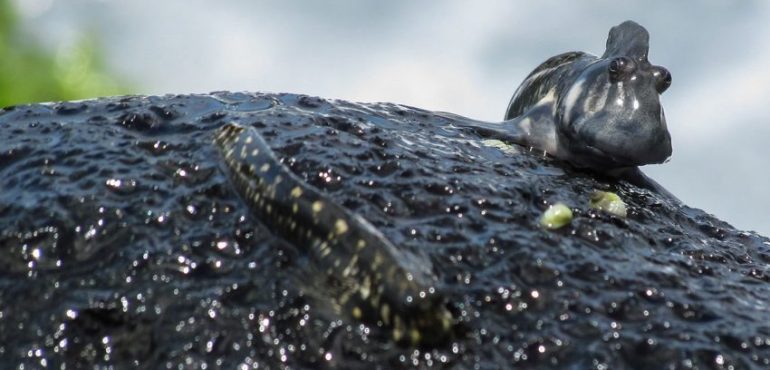The first fish that stepped onto land more than 350 million years ago wasn’t a fluke. Our ocean friends may have evolved the ability to come out of the water at least 30 times over the ages, according to a new study of the diversity of amphibious fish alive today. The work highlights the factors that foster extreme lifestyle changes—and may hint at how the very first fish took to land.
“It’s fascinating that … these transitions may not be as difficult as presumed,” says Sandy Kawano, a comparative biomechanist at the National Institute for Mathematical and Biological Synthesis in Knoxville, Tennessee, who wasn’t involved with the study.
To conduct the study, Terry Ord and Georgina Cooke at the University of New South Wales in Kensington, Australia, pored through scientific papers for fish that manage to make a go on land. That allowed them to count how many times today’s fish have adapted to life out of the water, and determine whether these landlubbers have anything in common.
The duo found 130 fish species that live on land today to some degree—from the American eel (Anguilla rostrata), which slithers between ponds after it rains, to the longspined sea scorpion (Taurulus bubalis), an ornate looking coastal fish that hops out of tide pools when oxygen levels dip too low. And then there’s the Atlantic mudskipper (Periophthalmus barbarous), a fish with bulbous eyes and armlike fins that crawls around on mudflats to find food.
The fish family tree is full of examples like this: 33 families contain at least one fish with an affinity for solid ground, according to the study published this month in Evolution. So it’s a safe bet that hopping up on land evolved at least that many times, the authors say.
One family deserved a closer look: the blennies, a group of especially land-loving coastal fish that the authors studied in the wild to create a more fine-tuned family tree. Blennies, the team found, made the jump to land at least three different times, and maybe as many as seven. Pacific leaping blennies (Alticus arnoldorum) are a particular overachiever—they spend their adult lives hopping around on rocks and have bodies to match, with suction cup–like fins that help them cling on while being pounded by waves. These blennies are so water-averse that if you chase them, “they’ll run away from you further into the rocks,” Ord says.
In the process of studying these fish, the duo realized that two blenny species categorized as “marine” actually spent a fair amount of time out of water. If that’s at all representative of the other groups where the researchers found hints of affinity for land, then 33 is probably far too low of an estimate for how many times landlubbers have evolved among living species, Ord says.
Kawano praises the group’s combination of different types of data—from research papers to tide pools—and notes how ecologically diverse these land-loving species are. “There’s not just one way to be amphibious,” she says.
The transition to land does, however, seem to happen especially often in intertidal zones: areas blanketed in water at high tide and exposed at low tide. That finding might hint at the lifestyle of our ancestors that came up onto land, says Michel Laurin, a paleontologist at the French national research agency CNRS in Paris. Older schools of thought—which some still hold—speculate that the first landlubbing fish ventured out from freshwater. But, he says, “all the recent findings suggest that our ancestors came from the sea.” Given that the intertidal zone seems to be a staging ground for moving up onto land today, perhaps it was hundreds of millions of years ago as well.
Source: AAAS, http://www.sciencemag.org/news/2016/06/fish-may-have-evolved-live-land-more-30-time


